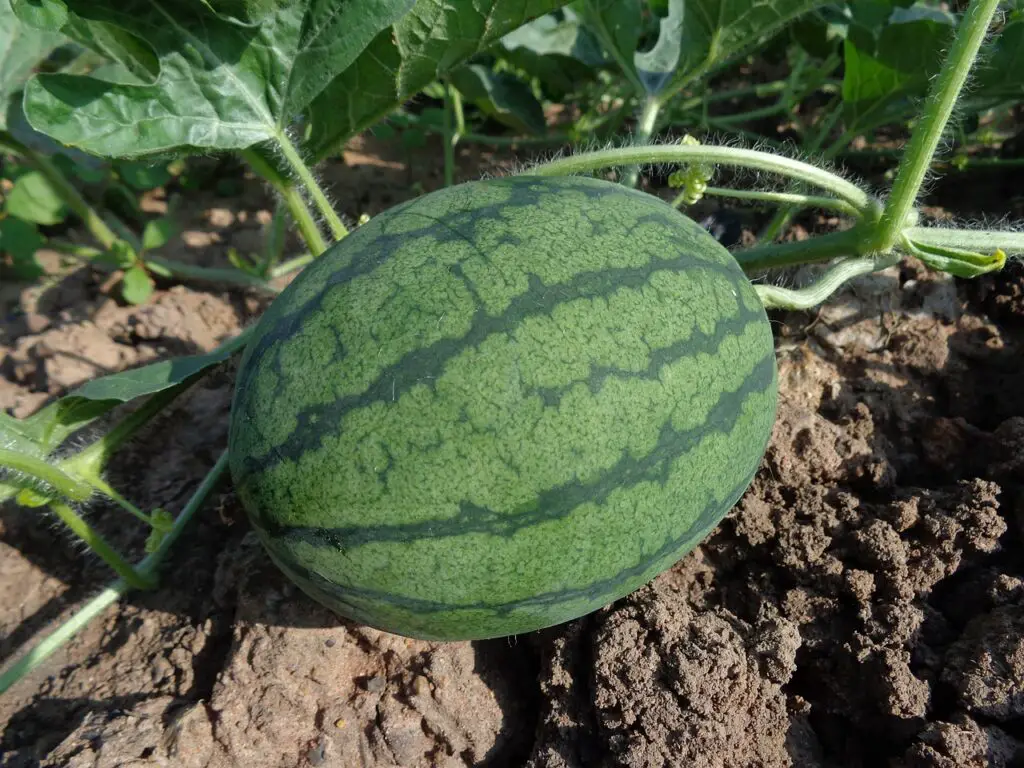
Watermelon is a refreshing summer treat that many people look forward to. However, sometimes you may end up with an underripe watermelon that is not as sweet and juicy as you had hoped. While it may be tempting to toss it out, there are actually several things you can do with an underripe watermelon.
One option is to use it in a savory dish. Underripe watermelon has a firm texture and a slightly sour flavor, which makes it a great addition to salads or salsas. You can also grill or roast it to bring out its natural sweetness and caramelization. Another idea is to blend it into a gazpacho or other chilled soup for a refreshing summer meal.
If you still want to enjoy the sweetness of watermelon, you can try ripening it at home. Place the underripe watermelon in a warm, sunny spot and rotate it every few days to ensure even ripening. You can also wrap it in newspaper or a brown paper bag to speed up the process. Once the watermelon is fully ripe, it will be sweeter and juicier, making it perfect for snacking or using in sweet recipes.
Table of Contents
Understanding Watermelon Ripeness
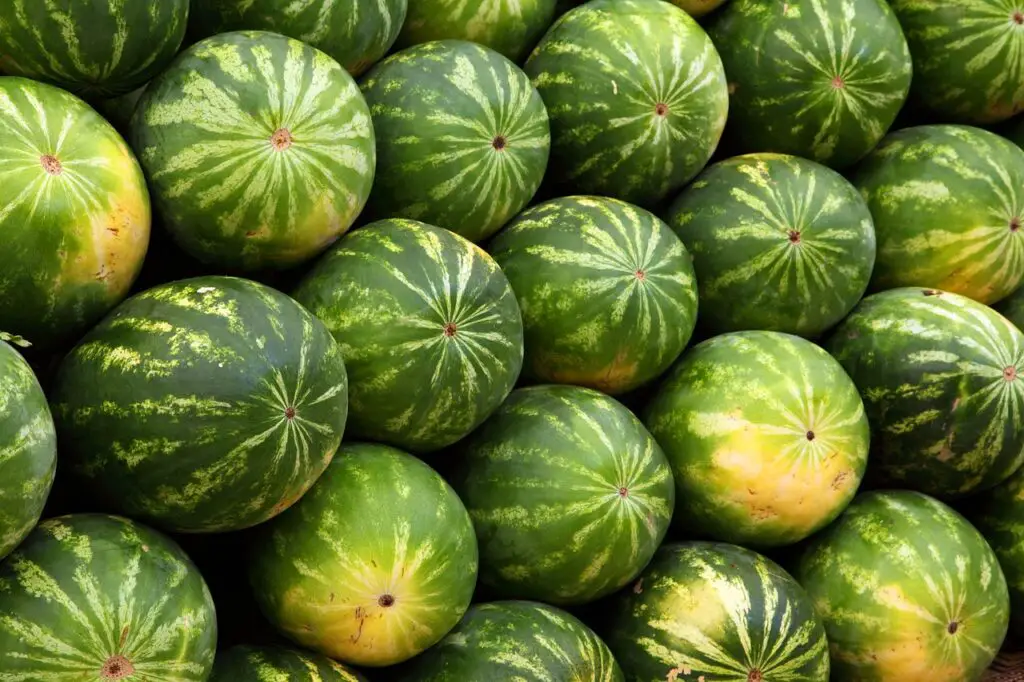
When it comes to watermelons, ripeness is key to ensuring a sweet and juicy fruit. Understanding the signs of ripeness can help you pick the perfect watermelon and avoid the disappointment of an underripe one.
One of the most common methods for determining ripeness is the thump test. A ripe watermelon will produce a deep, hollow sound when thumped. If the sound is dull or flat, the watermelon is likely underripe.
Another indicator of ripeness is the field spot. This is the area of the watermelon that was resting on the ground while it was growing. A ripe watermelon will have a creamy yellow or orange field spot, while an underripe one will have a white or green spot.
Tendrils, the curly stems near the fruit, can also provide insight into ripeness. If the tendril is dry and brown, the watermelon is likely ripe. However, if it is green and fresh-looking, the watermelon may still be maturing.
Sugar spots, which are small areas of extra sweetness on the watermelon, can also be a sign of ripeness. Look for dark, rough patches on the skin of the watermelon to find these spots.
Finally, the sniff test can help determine ripeness. A ripe watermelon should have a sweet, fruity aroma. If there is no scent or a sour smell, the watermelon may be underripe.
It’s important to note that once a watermelon is harvested, it will not continue to ripen like some other fruits. However, you can still ripen a watermelon after cutting it by leaving it at room temperature for a few days.
By paying attention to these indicators of ripeness, you can ensure that you are picking a watermelon that is mature and ready to eat.
The Problem with Underripe Watermelon
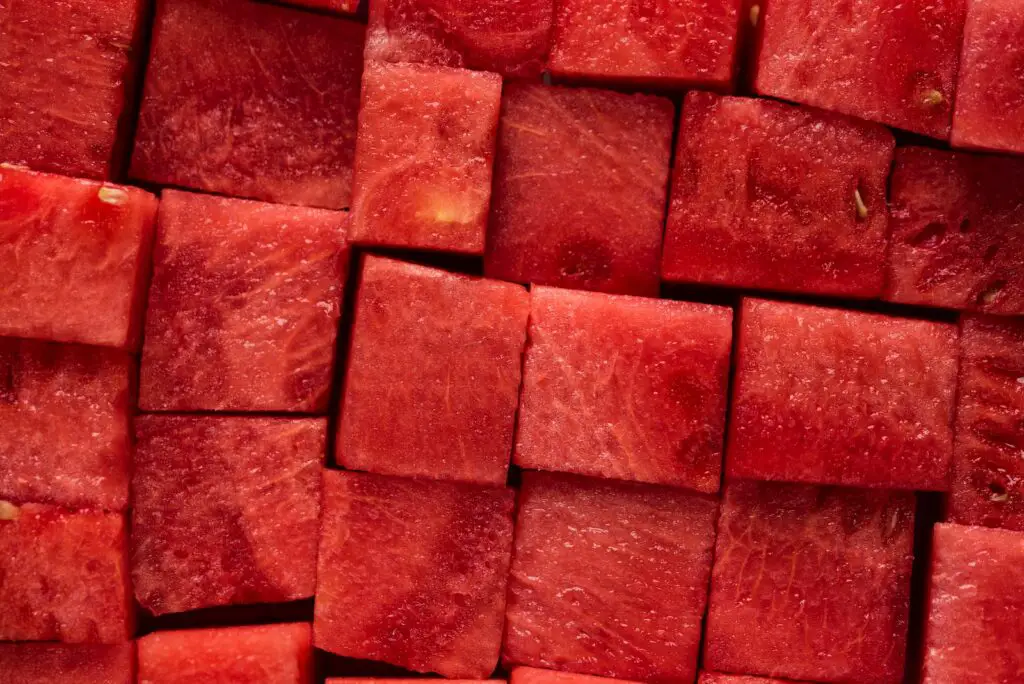
Underripe watermelon is a common problem that many people face when purchasing or growing watermelons. The hard, bitter taste of an unripe watermelon can be a major disappointment, especially when you were expecting a sweet and juicy treat.
One of the main reasons for underripe watermelon is harvesting too early. Watermelons need time to ripen on the vine, and if they are picked too soon, they will not have reached their full potential. This can result in a watermelon that is hard, tasteless, and lacking in sweetness.
Another factor that can contribute to underripe watermelon is environmental conditions. If the weather is too cool or too dry, the watermelon may not develop properly, resulting in a disappointing taste and texture.
It’s important to note that not all watermelons are created equal. Some varieties are naturally sweeter and juicier than others, while others may be more prone to underripe fruit. If you are purchasing watermelon from a grocery store or farmer’s market, it may be helpful to do some research on the different varieties available to find one that suits your taste preferences.
In summary, underripe watermelon can be a frustrating and disappointing experience. It’s important to be aware of the factors that can contribute to underripe fruit, such as harvesting too early or unfavorable environmental conditions. By understanding these factors and doing your research, you can increase your chances of enjoying a sweet and juicy watermelon.
Culinary Uses of Underripe Watermelon
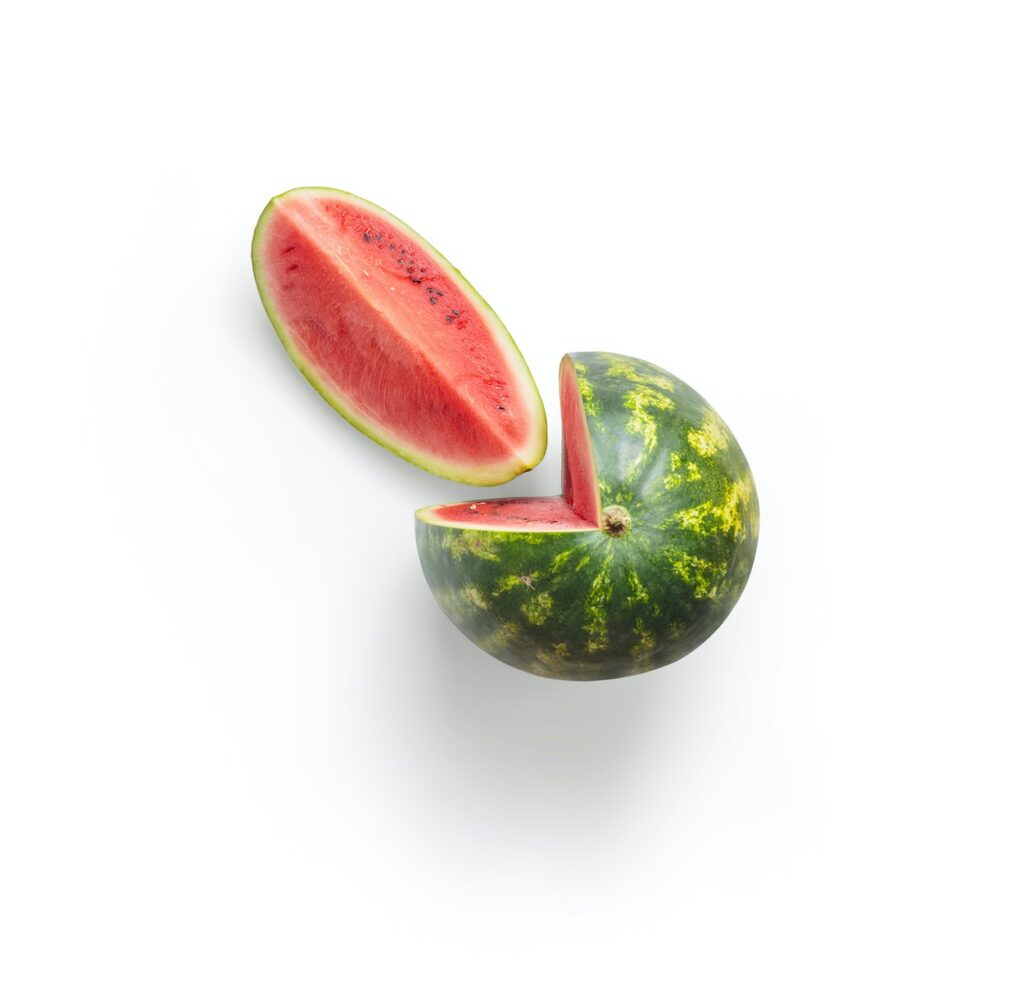
Underripe watermelon may not be as sweet and juicy as a fully ripe one, but it can still be used in various culinary applications. Here are some ideas for using underripe watermelon in your cooking:
Pickling
Underripe watermelon can be pickled and used as a condiment or added to salads for a tangy crunch. To make pickled watermelon rind, peel the green outer layer of the watermelon and cut the white rind into small pieces. Boil the rind in a mixture of water, vinegar, sugar, and salt until tender. Add some spices like cinnamon, cloves, or allspice for extra flavor.
Salad
Underripe watermelon can be used in salads to add a refreshing crunch. Combine diced underripe watermelon with sliced cucumber and red onion, chopped mint, and crumbled feta cheese. Dress the salad with a simple vinaigrette made with olive oil, lime juice, salt, and pepper.
Sorbet
Underripe watermelon can be used to make a refreshing sorbet that’s perfect for hot summer days. Blend diced underripe watermelon with sugar, lime juice, and mint until smooth. Freeze the mixture in an ice cream maker according to the manufacturer’s instructions.
Smoothie
Underripe watermelon can be used in smoothies for a refreshing and nutritious drink. Blend diced underripe watermelon with frozen berries, yogurt, and honey until smooth. Add some lime juice and mint for extra flavor.
Watermelon Agua Fresca
Underripe watermelon can be used to make a delicious and refreshing agua fresca. Blend diced underripe watermelon with water, sugar, and lime juice until smooth. Serve over ice with a sprig of mint.
Savory Dishes
Underripe watermelon can be used in savory dishes like salads, stews, and stir-fries. Combine diced underripe watermelon with sliced onion, tomato, and basil for a simple and flavorful side dish. Add some vinegar or lime juice for extra tanginess.
Overall, underripe watermelon can be a versatile ingredient in your cooking. Don’t let an unripe watermelon go to waste – try one of these culinary uses instead.
Sweetening Underripe Watermelon
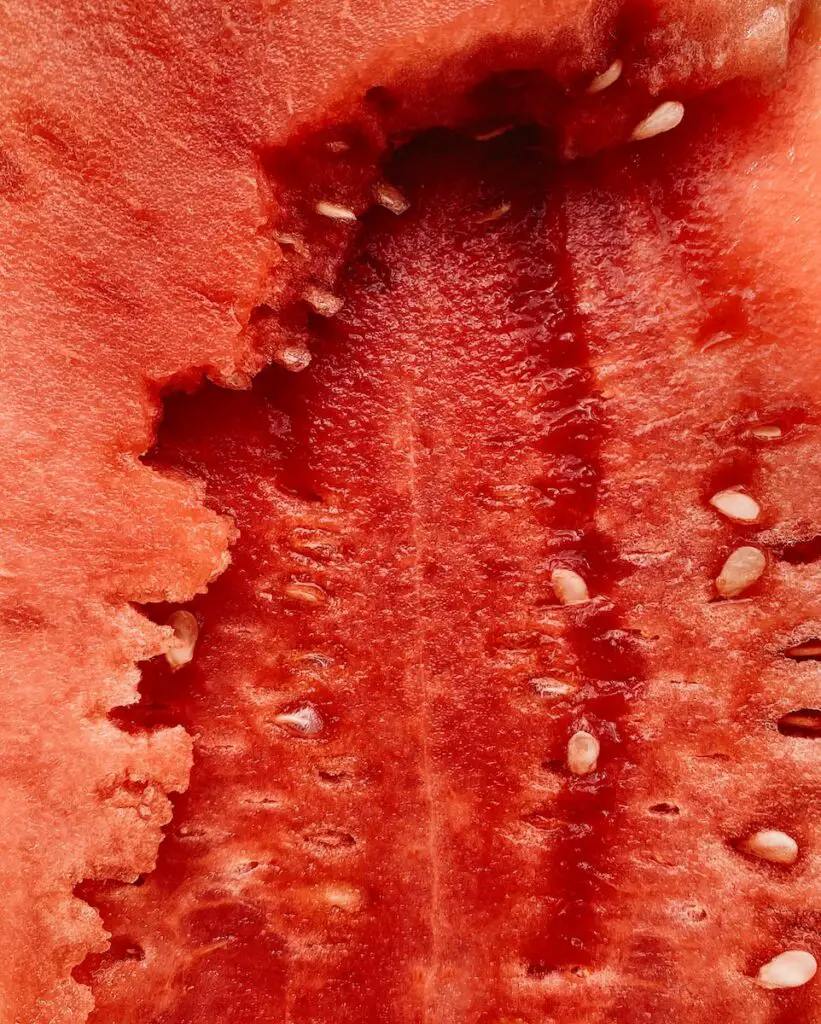
Underripe watermelon can have a bland taste and a tough texture, but it can be sweetened to make it more enjoyable. Here are a few ways to sweeten underripe watermelon:
1. Honey
Honey is a natural sweetener that can add flavor to underripe watermelon. Simply drizzle honey over the watermelon slices and let it sit for a few minutes before serving. The sweetness of honey will complement the natural sweetness of the watermelon and make it more enjoyable.
2. Sugar
Sugar is another common sweetener that can be used to sweeten underripe watermelon. Sprinkle sugar over the watermelon slices and let it sit for a few minutes before serving. The sugar will dissolve into the watermelon and enhance its flavor.
3. Salt
Salt may seem like an odd addition to sweeten underripe watermelon, but it can actually bring out the natural sweetness of the fruit. Sprinkle a small amount of salt over the watermelon slices and let it sit for a few minutes before serving. The salt will help to balance out any bitterness in the underripe watermelon and make it taste sweeter.
4. Lime Juice
Lime juice can add a tangy sweetness to underripe watermelon. Squeeze fresh lime juice over the watermelon slices and let it sit for a few minutes before serving. The acidity of the lime juice will help to break down the tough texture of the underripe watermelon and make it more enjoyable.
5. Ripen the Watermelon
If all else fails, let the watermelon ripen a bit more before eating it. Place the watermelon in a warm, sunny spot for a few days to allow it to ripen naturally. The extra time on the vine will help to develop the natural sugars in the watermelon and make it sweeter.
By using one of these methods, underripe watermelon can be sweetened and made more enjoyable to eat.
Ripening an Underripe Watermelon
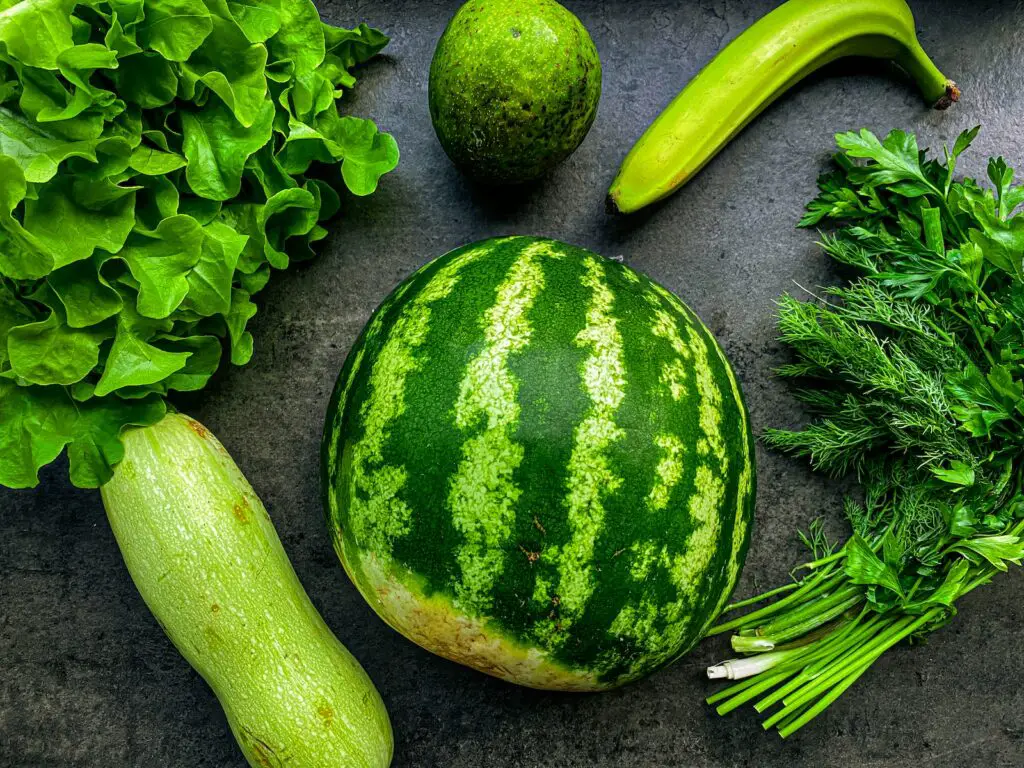
If you’ve ever cut into a watermelon only to find that it’s underripe, you may be wondering what to do with it. Fortunately, there are a few ways to ripen an underripe watermelon.
One of the most effective ways to ripen a watermelon is to leave it in a warm, sunny spot. This is because watermelons ripen best in temperatures between 70 and 90 degrees Fahrenheit. If you have a garden, you can leave the watermelon on the vine to ripen in the sun. If not, you can place the watermelon in a sunny spot outside or near a window that gets plenty of sunlight.
Another way to ripen an underripe watermelon is to place it in a paper bag with a ripe banana or apple. This is because bananas and apples give off ethylene gas, which can speed up the ripening process. Simply place the watermelon in a paper bag with a ripe banana or apple and leave it for a few days. Check on it periodically to see if it has ripened.
It’s important to note that once a watermelon is picked, it will not continue to ripen. This means that if you have an underripe watermelon that was already picked, you will need to use one of the above methods to ripen it.
In summary, to ripen an underripe watermelon, you can leave it in a warm, sunny spot or place it in a paper bag with a ripe banana or apple. Remember that once a watermelon is picked, it will not continue to ripen on its own.
Nutritional Value of Watermelon

Watermelon is a refreshing fruit that is rich in nutrients and water. It is a great source of vitamins, minerals, and antioxidants that are essential for maintaining good health.
Watermelon is low in calories, making it an excellent choice for those who are trying to lose weight. One cup of diced watermelon contains only 46 calories. It is also high in water content, which helps to keep the body hydrated.
Here are some of the key nutrients found in watermelon:
- Vitamin C: Watermelon is an excellent source of vitamin C, which is important for maintaining healthy skin, bones, and teeth. One cup of diced watermelon contains 21% of the daily recommended intake of vitamin C.
- Potassium: Watermelon is a good source of potassium, which is essential for maintaining healthy blood pressure. One cup of diced watermelon contains 5% of the daily recommended intake of potassium.
- Lycopene: Watermelon is one of the best dietary sources of lycopene, an antioxidant that may help to reduce the risk of certain types of cancer. Lycopene is also important for maintaining healthy skin.
- Vitamin A: Watermelon is a good source of vitamin A, which is important for maintaining healthy eyesight. One cup of diced watermelon contains 18% of the daily recommended intake of vitamin A.
In conclusion, watermelon is a delicious and nutritious fruit that is low in calories and high in water content. It is a great source of vitamins, minerals, and antioxidants that are essential for maintaining good health.
Storing and Preserving Watermelon
When it comes to storing and preserving underripe watermelon, there are a few things to keep in mind to ensure that it stays fresh and tasty for as long as possible.
First and foremost, it’s important to store watermelon in a cool, dry place. If you have an uncut watermelon, it can be stored at room temperature for up to two weeks. However, if you’ve already cut into the watermelon, it’s best to store it in the refrigerator to prevent it from spoiling.
To store a cut watermelon in the refrigerator, simply wrap it tightly in plastic wrap or place it in an airtight container. This will help to keep the watermelon fresh and prevent it from absorbing any odors from other foods in the fridge.
If you find yourself with an overripe watermelon, don’t worry! There are still plenty of ways to use it up before it goes bad. Overripe watermelon can be pureed and used as a base for smoothies or frozen into popsicles. It can also be diced and added to fruit salads or used to make a refreshing watermelon gazpacho.
In conclusion, storing and preserving watermelon is easy as long as you keep it in a cool, dry place and store it properly once it’s been cut. And if you do end up with an overripe watermelon, don’t fret – there are plenty of delicious ways to use it up!
Conclusion
In conclusion, there are several ways to make the most of an underripe watermelon. While it may not be as sweet or juicy as a fully ripe watermelon, it can still be a tasty and refreshing treat.
One option is to slice the watermelon and sprinkle it with a bit of salt. This can help bring out the natural sweetness and make the fruit more enjoyable to eat.
Another option is to blend the watermelon into a smoothie or juice. Adding other fruits or vegetables, such as strawberries or cucumber, can help balance out the flavor and make for a delicious and nutritious drink.
Lastly, if you’re feeling adventurous, you can try pickling the watermelon rind. This can be a fun and unique way to enjoy the fruit, and can add a tangy and flavorful twist to your meals.
Overall, while underripe watermelon may not be ideal for eating on its own, there are plenty of ways to enjoy it and make the most of its unique flavor and texture.